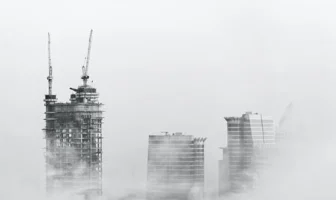
Plate steel is a type of metal product widely used to manufacture a wide variety of steel structures. It’s applied to fabricate various steel structural elements such as angles, channels, strips, and other steel elements.
These days, there are two main types of iron-carbon alloys — cold-rolled and hot-rolled steel (quarto plate steel). All other modifications are included in these two concepts. There are no technical differences in the melting of both types of material. They come at the stage of final processing and rolling the metal into sheets of stainless steel.
Hot-rolled Steel

The hot-rolling process occurs at over 900 degrees Celsius. When metal heats up, it is much easier to shape it. Hot rolling is usually cheaper than cold rolling, and the process is often nonstop, so the metal does not have to be heated. However, metal contracts when cooled, so it’s tougher to predict the size and shape of the finished product than with cold-rolled steel, which is why you entrust this process with a professional.
The price of a hot rolled steel tube is its main advantage because it is a cheap yet durable option. It is often used as supporting material in constructing large objects due to its durability.
Cold-rolled Metal
Any cold-rolled sheet is made from hot-rolled billets. Billets are first cleaned of scale and oxide. After that, the billets were transferred to cold-rolling mills. The thickness of a cold-rolled steel plate must not exceed 5 mm.
Then, the hardening stage begins. The steel is annealed in furnaces at about 700 degrees Celsius. After annealing, plates are rolled again in the mill.
The last stage is the compression of the finished products by up to 3%. This procedure increases the hardness and strength of the plates to perform their functions in the future. Cold-rolled steel sheets are used to manufacture construction products: profiled sheets, tin plates, galvanized sheets, polymer plates, roofing iron, etc.
The main products of sheet products are the following types of metal plates:
Smooth Metal Plates

Metal sheets with a painted surface can have different thicknesses and dimensions, and the distinct advantage is an attractive layout. The main area of use is finishing works.
Smooth Galvanized Steel Sheets
Metal runs an extra step of zinc bonding processing after forming to enhance performance characteristics. The alloy becomes resistant to corrosion, withstands temperature fluctuations, and has a long service life. The usage field is much more comprehensive, and different types of galvanized plates allow choosing the raw material for any production needs.
Perforated Metal Sheets
A steel plate is processed on a particular machine, and a pattern appears through holes on its surface. Depending on the purpose, the holes’ diameter and location may vary, and the central area of use of such a product does not go beyond finishing works.
Stainless Steel

One of the most in-demand rolled steel products used both for the construction fit-out and for the production of various parts. The material’s distinctive quality is in its heat and corrosion resistance, so the finished structure can last a long time and retain its strength under any environmental conditions.
Profiled Steel Plates
A billet is bent at desired angles to achieve more splendid corrugated plates’ strength and rigidity while rolling through the machine. Steel relief may be wavy or trapezoid-shaped.
Decorative sheets with corrugated surfaces are widely used for finishing various structures and can be used for wall cladding or roofing.
Choosing a particular type of metal plate, you have to consider a set of mandatory functional characteristics. Depending on the manufacturing technology and the sheet’s thickness, the metal’s physical and mechanical properties can vary significantly.
Read Also:




























